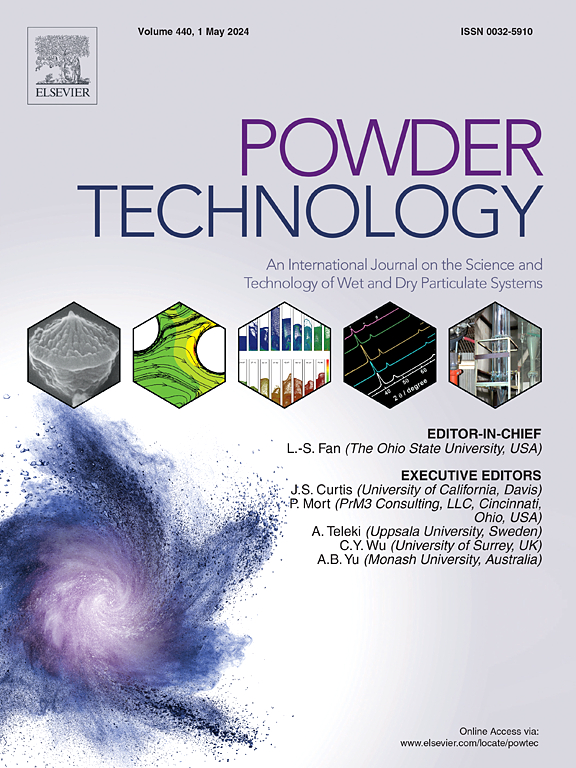Investigation of a jet and stirring synergistic flotation column combining two-phase flow and particle tracking simulation methods with experiments
IF 4.5
2区 工程技术
Q2 ENGINEERING, CHEMICAL
引用次数: 0
Abstract
This paper details the design concept of a jet and stirring synergistic flotation column; it conducts a simulation study of the internal flow field using the two-phase flow module and particle tracking module in COMSOL software; and it establishes a 15-l jet and stirring synergistic flotation column for experimental research. The results show that in the jet-stirring coupling structure of the device, the flow field exhibits high turbulent kinetic energy and turbulence dissipation rate, which facilitates collision and mixing in the three-phase system. The device modifies coal slurry particles, increasing the slurry contact angle and enhancing the hydrophobicity of the particles. The speed distribution of the flow field, gas distribution, and particle distribution within the column are reasonable. The uniformity coefficient of aeration within the column reaches 96.10 %, and the solid-liquid ratio at sampling points on different height planes is similar, with no dead zones or particle accumulation. The flotation column with jet and stirring synergy exhibits good flotation performance, with the recovery rate reaching its maximum after 1 min, the flotation yield reaching 53.96 % within 5 min, and the ash content of the flotation clean coal stabilizing at 11.29 %, qualifying as high-quality flotation clean coal. The device shows good adaptability and demonstrates good flotation performance under conditions of low air intake. This study provides a new technical solution for efficiently separating fine-grained minerals, holds potential for further industrial development, and has positive significance for the R&D of flotation equipment and three-phase mixing devices.

求助全文
约1分钟内获得全文
求助全文
来源期刊

Powder Technology
工程技术-工程:化工
CiteScore
9.90
自引率
15.40%
发文量
1047
审稿时长
46 days
期刊介绍:
Powder Technology is an International Journal on the Science and Technology of Wet and Dry Particulate Systems. Powder Technology publishes papers on all aspects of the formation of particles and their characterisation and on the study of systems containing particulate solids. No limitation is imposed on the size of the particles, which may range from nanometre scale, as in pigments or aerosols, to that of mined or quarried materials. The following list of topics is not intended to be comprehensive, but rather to indicate typical subjects which fall within the scope of the journal's interests:
Formation and synthesis of particles by precipitation and other methods.
Modification of particles by agglomeration, coating, comminution and attrition.
Characterisation of the size, shape, surface area, pore structure and strength of particles and agglomerates (including the origins and effects of inter particle forces).
Packing, failure, flow and permeability of assemblies of particles.
Particle-particle interactions and suspension rheology.
Handling and processing operations such as slurry flow, fluidization, pneumatic conveying.
Interactions between particles and their environment, including delivery of particulate products to the body.
Applications of particle technology in production of pharmaceuticals, chemicals, foods, pigments, structural, and functional materials and in environmental and energy related matters.
For materials-oriented contributions we are looking for articles revealing the effect of particle/powder characteristics (size, morphology and composition, in that order) on material performance or functionality and, ideally, comparison to any industrial standard.
 求助内容:
求助内容: 应助结果提醒方式:
应助结果提醒方式:


